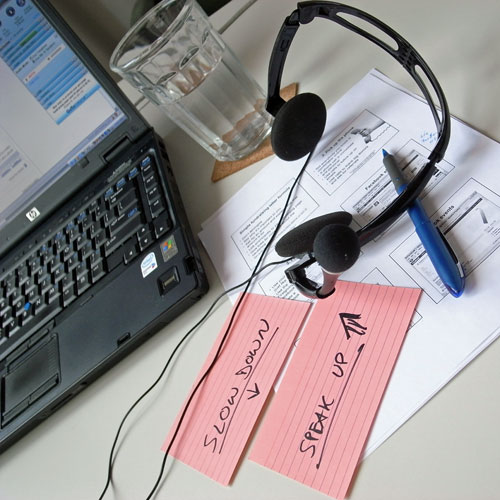I’ve been doing webinars for a while as marketing vehicles and occasionally just for meetings. You can see some of them on Vimeo. As telepresence goes, a screen-sharing session with audio and sometimes video is pretty good. I’ve used a few different tools – notably GoToWebinar, WebEx and Adobe Acrobat Connect Pro (formerly Macromedia Breeze) – and I more or less have my working method down pat. But recently, I had chance to observe somebody else’s webinar setup, and it was good food for thought. So for all you webinar wannabes out there (and maybe even some pros, too), I present some of my favorite webinar tips, my own and those I’ve learned from others.
1. Have a producer
I know this won’t be practical for eveybody, but I find having somebody assist during a live webinar to be invaluable. I lean on the producer much like a radio host does, to monitor the technology and the Q&A, and to remind me if I’m talking too fast or too low or running out of time. A live producer means you can concentrate on doing the presentation without having to pause to answer text chat questions about minor logistical things.
2. Audio on every page
Depending on your software and preferences, audio may be delivered through the internet or by having participants dial in to a conference line. Whatever the method, it’s usually the weakest link in the system. Be sure to include audio instructions on every slide of your presentation in case people show up late, which they always do.
3. Mise en place

Mise en place means “put in place” and in cooking, means having all your ingredients and equipment prepared ahead of time and set out in an orderly fashion so you can cook efficently and without interruption. Here are some things that should be in your webinar Mise:
- a glass of water (no ice, nothing fizzy or hot) with a straw and a soft coaster – this is the only way you’ll stay hydrated while wearing a headset mic and not make noise that your audience will hear. (Unless you’re Ron Moore and you want people to hear the ice clinking in your scotch)
- hardcopy of your script or presentation – you never know what might happen
- notepaper or cards for passing notes to your producer – your producer might also want to have some handy cards made up with likely phrases like “speak louder” or “you’re boring the crap out of them”
- the meeting number, URL and audio call-in number in case you get disconnected or need to provide them
4. Reboot now
The last thing you want is to have some kind of system message pop up during a session. You can minimize the chance of this by doing a pre-emptive reboot before your webinar. Also be sure to close or disable every application that might pop up a window, use bandwidth or make an unwelcome noise, such as outlook, instant messaging clients, scheduled tasks, skype, weather widgets, etc.
5. Mind your screen size
When creating presentations or visuals for a webinar, keep in mind that your audience may have less luxurious monitors than you do or may choose to watch your show in a window. I like to check things in 800×600 resolution to be sure. Be especially careful of screenshots and screen sharing where the text can become illegible if its scaled too far down. Also, don’t expect fancy graphic gradients and effects to come through perfectly.
6. Add value with live
You’re delivering this material as a live webianr, so make sure your audience gets a live experience. Be as interactive as possible. Answer questions live, refer to current events, field an online poll, dont’ sound like you’re reading from a script, invite feedback, do everything you can that you would do in a live in-person presentation. If you don’t at lest try to do that, why are you bothering with a live webinar?
7. Record, reuse, recycle
The counterpoint to #6 is that once you’ve gone through all the trouble of doing a presentation, why not get as much use out of it as possible? Record your webinars (most webinar software has this ability, or you can use other software on top of it, such as TechSmith’s excellent Camtasia Studio) and make them available for people who missed the live show to view. Edit them into podcasts or youtube videos. If you have the stomach for it, watch your own webcasts to learn from your mistakes and get better at your craft.
People aren’t getting any less busy – even those who are out of work – and travel takes time and money, so I don’t expect the market for good webinars to shrink any time soon.

I found this article extremely useful. Boy, you’re right about the system message pop ups. That’s embarrassing.